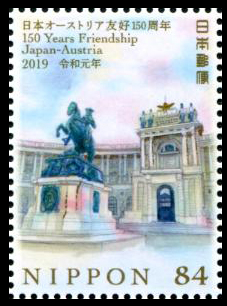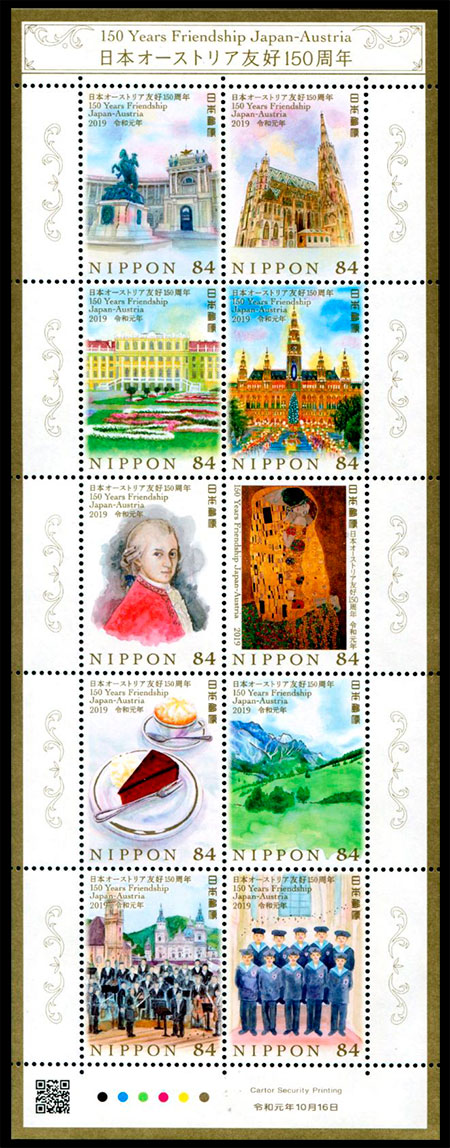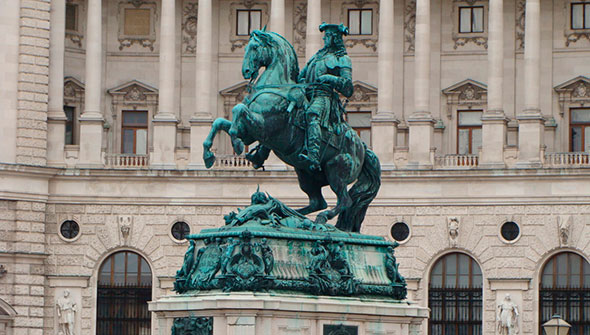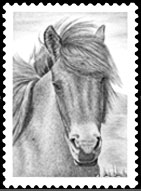Japan. 150 years of Japanese-Austrian friendship
About stamps and plots

On October 16, 2019, Japan Post issued a miniature sheet in honor of the 150th anniversary of the Japanese-Austrian friendship.
Japan and Austria have long-standing friendly relations. In 1869, Japan signed the "Treaty of Friendship and Trade", thus establishing official bilateral diplomatic relations with Austria. In July 1953, ties were restored after breaking off relations during World War II. Austria has an embassy in Tokyo and 4 honorary consulates (in Hiroshima, Nagoya, Osaka and Sapporo), while Japan has an embassy in Vienna and an honorary consulate in Salzburg.
In honor of the 150th anniversary of the establishment of diplomatic relations, the Japanese and Austrian Post issued a commemorative series of stamps. In Japan, a miniature sheet of 10 stamps was issued, which demonstrate the main attractions, natural beauty and national characteristics of Austria. And the Austrian post issued a souvenir sheet with the image of the sailing corvette "Erzherzog Friedrich", on which the Austrian delegation arrived in Japan in 1869.
In honor of the 150th anniversary of the establishment of diplomatic relations, the Japanese and Austrian Post issued a commemorative series of stamps. In Japan, a miniature sheet of 10 stamps was issued, which demonstrate the main attractions, natural beauty and national characteristics of Austria. And the Austrian post issued a souvenir sheet with the image of the sailing corvette "Erzherzog Friedrich", on which the Austrian delegation arrived in Japan in 1869.

When developing a miniature sheet, designer Yasuko Yamada chose the main sights of Vienna as subjects for stamps: the Hofburg Imperial Palace with the equestrian statue of Prince Eugene of Savoy in front of it, St. Stephen's Cathedral and Schönbrunn Palace. The series is continued by the Vienna Main Christmas Market, a portrait of the Austrian composer Wolfgang Amadeus Mozart, a painting by the Austrian artist Gustav Klimt "The Kiss". The Viennese cake and Viennese coffee, as well as the Austrian Alps, the Vienna Philharmonic Orchestra and the Vienna Boys' Choir were on the stamps. This miniature sheet has become a kind of mini travel guide to Austria.
Equestrian monument to Prince Eugene of Savoy

In Vienna, in front of the building of the Hofburg Imperial Palace, there is a large oval square on which equestrian monuments to two famous commanders - Archduke Charles of Austria and Prince Eugene - are installed. The historical square bears the sonorous name Heldenplatz - Heroes' Square.
The famous commander Eugene of Savoy was born in 1663 in Paris into an aristocratic family, but his life and destiny turned out to be closely connected with Austria. The merits of Eugene of Savoy to the country, brilliant mind and courageous heart made him a national hero of Austria.
At the age of 19, Eugene of Savoy entered military service in the army of the Holy Roman Empire. At that moment, there were battles on the territory of Austria, Vienna was besieged by the Turks. Eugene of Savoy distinguished himself during the battle of Vienna and received a dragoon regiment under his command. He turned out to be a born soldier: at the same time, he not only showed the wonders of personal military prowess, but also the amazing abilities of a military strategist. Already at the age of 25, he was promoted to general, and in 1693, at the age of 34, he became a field marshal. In 1697 he won a major victory over the Turks at Zenta, and became Generalissimo and one of the most prominent military leaders in Europe. The Austrian army, under his command, became one of the best and most efficient armies in Europe. In subsequent years, Eugene of Savoy led the Austrian troops in the War of the Spanish Succession (from 1701 to 1714) and in the Austro-Turkish War of 1716-1718. Eugene of Savoy carried out a number of important military reforms. Since 1703, Prince Eugene of Savoy was a member of the Military and later Privy Council under the emperor. The commander died in Vienna from pneumonia on April 21, 1736 at the age of 73.
Under Emperor Franz Joseph, as part of a large-scale project for the reconstruction of the palace complex and the square, the famous Austrian sculptor Anton Dominik Fernkorn was commissioned to create two equestrian monuments. The monument to Archduke Charles of Austria was first erected in 1860, and in 1865 a monument to Prince Eugene appeared on the square.
The famous commander Eugene of Savoy was born in 1663 in Paris into an aristocratic family, but his life and destiny turned out to be closely connected with Austria. The merits of Eugene of Savoy to the country, brilliant mind and courageous heart made him a national hero of Austria.
At the age of 19, Eugene of Savoy entered military service in the army of the Holy Roman Empire. At that moment, there were battles on the territory of Austria, Vienna was besieged by the Turks. Eugene of Savoy distinguished himself during the battle of Vienna and received a dragoon regiment under his command. He turned out to be a born soldier: at the same time, he not only showed the wonders of personal military prowess, but also the amazing abilities of a military strategist. Already at the age of 25, he was promoted to general, and in 1693, at the age of 34, he became a field marshal. In 1697 he won a major victory over the Turks at Zenta, and became Generalissimo and one of the most prominent military leaders in Europe. The Austrian army, under his command, became one of the best and most efficient armies in Europe. In subsequent years, Eugene of Savoy led the Austrian troops in the War of the Spanish Succession (from 1701 to 1714) and in the Austro-Turkish War of 1716-1718. Eugene of Savoy carried out a number of important military reforms. Since 1703, Prince Eugene of Savoy was a member of the Military and later Privy Council under the emperor. The commander died in Vienna from pneumonia on April 21, 1736 at the age of 73.
Under Emperor Franz Joseph, as part of a large-scale project for the reconstruction of the palace complex and the square, the famous Austrian sculptor Anton Dominik Fernkorn was commissioned to create two equestrian monuments. The monument to Archduke Charles of Austria was first erected in 1860, and in 1865 a monument to Prince Eugene appeared on the square.
 The sculptor put all his talent in the creation of the monument to Archduke Charles and he managed to create a real masterpiece and an engineering miracle - a horse rearing up has only two points of support. In 1859, when work on the monument was completed, Fernkorn was at the pinnacle of his creative career. And then he began work on the monument to Prince Eugene of Savoy. There is a legend that Fernkorn initially wanted to sculpt the second equestrian statue with two points of support, he struggled with this task for several years, but once again he failed to catch this delicate balance and therefore lost his mind. The physical and mental health of the sculptor was greatly shaken and the work on the monument to Prince Eugene was already completed by Fernkorn's student, the sculptor Franz Pönninger. The grand opening of the monument took place in the presence of Emperor Franz Joseph on October 18, 1865, on the 202nd anniversary of the birth of Eugene of Savoy.
The sculptor put all his talent in the creation of the monument to Archduke Charles and he managed to create a real masterpiece and an engineering miracle - a horse rearing up has only two points of support. In 1859, when work on the monument was completed, Fernkorn was at the pinnacle of his creative career. And then he began work on the monument to Prince Eugene of Savoy. There is a legend that Fernkorn initially wanted to sculpt the second equestrian statue with two points of support, he struggled with this task for several years, but once again he failed to catch this delicate balance and therefore lost his mind. The physical and mental health of the sculptor was greatly shaken and the work on the monument to Prince Eugene was already completed by Fernkorn's student, the sculptor Franz Pönninger. The grand opening of the monument took place in the presence of Emperor Franz Joseph on October 18, 1865, on the 202nd anniversary of the birth of Eugene of Savoy.The famous commander triumphantly sits on a horse, reared up. The sculpture is devoid of the swiftness and power that distinguishes the monument to Archduke Charles, it rather resembles a ceremonial portrait, where everything is beautiful and proportionate. Under the horse's hooves lie the defeated Turkish standards - recognition of the military leader's merits in defending Vienna from the Turks at the end of the 17th century. The bronze statue of Prince Eugene is installed on a bronze base, resting on a rectangular marble pedestal by the Viennese architect Eduard van der Nyul. Austrian architect August Sicard and Viennese master bricklayer Joseph Kranner also took part in the design and construction of the pedestal. The pedestal is richly decorated with bronze casting, bas-reliefs and cartouches with the Savoy coat of arms and commemorative inscriptions. "The noble knight Prince Eugene", "The glorious conqueror of the enemies of Austria," The wise counselor of the three emperors "read the inscriptions on the pedestal of the monument. Thus, the descendants recognized the outstanding services of Eugene of Savoy in the military and political field.
Перейти в каталог


